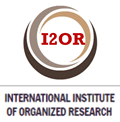Embarazo y trabajo. Factores que los relacionan
Palabras clave:
embarazo, trabajo, riesgos reproductivos, ambiente físico, factores organizacionales, salud mental, salud ocupacionalResumen
El artículo es un recorrido por algunos de los factores y condicionantes que se han estudiado y que determinan la relación trabajo-embarazo para que éste llegue a feliz término sin complicaciones: los factores clínicos y de hábitos perjudiciales, el entorno psicosocial y laboral, los factores psicosociales que determinan la relación del trabajo durante el embarazo, el bajo peso al nacer y algunos trastornos que se producen durante el mismo; los peligros que genera la ocupación, el ambiente físico de trabajo, las cargas físicas, los peligros osteomusculares y vasculares durante este periodo, y los factores organizacionales y de las características de la tarea que afectan la interrelación embarazo-trabajo
Descargas
Citas
Kurki T et al. Depression and anxiety in early pregnancy and risk for preeclampsia. Obstetrics & Gynecology 2000;95(4):487-90.
McCubbin JA et al. Prenatal maternal blood pressure response to stress predicts birthweight and gestational age: a preliminary study. American Journal of Obstetrics and Gynecology 1996;175(3):706-12.
Carceller R. Causas del crecimiento intrauterino. Jano On-line y agencias. 2005. Htm: fuma-embarazo.
Pattenden S, Dolk H, Vrijheid M. Inequalities in low birth weight: parental social class, area deprivation, and "lone mother" status. J Epidemiol Community Health 1999;53(6):355-8.
Klebanoff MA, Shiono PH, Rhoads GG. Outcomes of pregnancy in a national sample of resident physicians. N Engl J Med 1990;323(15): 1040-5.
Dinh PH, To TH, Vuong TH, Hojer B, Persson LA. Maternal factors influencing the occurrence of low birthweight in northern Vietnam. Ann Trop Paediatr 1996;16(4):327-33.
Hiroshige Y, Furuta M, Matsuda S, Kahyo H. The relation between birth weight and paternal occupation. Nippon Koshu Eisei Zasshi 1994;41(7): 653-7.
Kapoor SK, Anand K, Kumar G. Risk factors for stillbirths in a secondary level hospital at Ballabgarh, Haryana: a case control study. Indian J Pediatr 1994;61(2):161-6.
Verkerk PH, Zaadstra BM, Reerink JD, Herngreen WP, Verloove-Vanhorick SP. Social class, ethnicity and other risk factors for small for gestational age and preterm delivery in The Netherlands. Eur J Obstet Gynecol Reprod Biol 1994; 53(2):129-34.
Ericson A, Eriksson M, Kallen B, Zetterstrom R. Secular trends in the effect of socio-economic factors on birth weight and infant survival in Sweden. Scand J Soc Med 1993;21(1):10-6.
Alvarado R, Medina E, Aranda W. El efecto de variables psicosociales durante el embarazo, en el peso y la edad gestacional del recién nacido. Revista Médica de Chile 2005;130(5).
Brett KM, Strogatz DS, Savitz DA. Employment, job strain, and preterm delivery among women in North Carolina. Am J Public Health 1997;87(2): 199-204.
Olsen J, Hemminki K, Ahlborg G, Bjerkedal T, Kyyronen P, Taskinen H, Lindbohm ML, Heinonen OP, Brandt L, Kolstad H, et al. Low birthweight, congenital malformations, and spontaneous abortions among dry-cleaning workers in Scandinavia. Scand J Work Environ Health 1990;16(3):163-8.
Lipscomb JA, Fenster L, Wrensch M, Shusterman D, Swan S. Pregnancy outcomes in women potentially exposed to occupational solvents and women working in the electronics industry. J Occup Med 1991;33(5):597-604.
Nogareda S, Nogareda C. Carga de trabajo y embarazo. Instituto de Higiene del Trabajo de España, Centro Nacional de Condiciones de Trabajo. 2004. Htm: embarazo–carga.
González Merlo J. Obstetricia. Barcelona: Ed. Científicas y Técnicas SA; 2004.
Paul J et al. Work load and musculoskeletal complaints during pregnancy. Scand. J Work Environ Health 1994;20(3)153-59.
Stein ZA et al. Working during pregnancy: physical and psychosocial strain. Occupational Medicine: State of the Art Reviews 1986;1(3):405-09.
Descargas
Publicado
Cómo citar
Número
Sección
Licencia
Aquellos autores/as que tengan publicaciones con esta revista, aceptan los términos siguientes:- Los autores/as conservarán sus derechos de autor y garantizarán a la revista el derecho de primera publicación de su obra, el cuál estará simultáneamente sujeto a la licencia Creative Commons Reconocimiento-NoComercial-CompartirIgual 4.0 Internacional (CC BY-NC-SA 4.0) Esta licencia permite a otros compartir el trabajo con un reconocimiento de la autoría del trabajo y la publicación inicial en esta revista (componente BY o atribución). Coincidente con la política de Acceso Abierto, no se podrán hacer usos comerciales de los contenidos publicados por esta revista (componente NC). Se permitirán las obras derivadas (remezcla, transformación o creación a partir de la obra original), siempre y cuando sean distribuidas bajo la misma licencia de la obra original (componente SA).
- Los autores/as podrán adoptar otros acuerdos de licencia no exclusiva de distribución de la versión de la obra publicada (p. ej.: depositarla en un archivo telemático institucional o publicarla en un volumen monográfico) siempre que se indique la publicación inicial en esta revista.
- Se permite y recomienda a los autores/as difundir su obra a través de Internet (p. ej.: en archivos telemáticos institucionales o en su página web) antes y durante el proceso de envío, lo cual puede producir intercambios interesantes y aumentar las citas de la obra publicada. (Véase El efecto del acceso abierto).






